“Pinche estúpido Dedica a trabar y ys deja de estar chingando Imbécil Estudia y luego te explico”
Dr Oscar Portillo-Moreno, BUAP, Mexico
Oscar Portillo-Moreno made his entire academic career at the Mexican university Benemérita Universidad Autonoma de Puebla (BUAP), starting with his bachelor degree in 1987, PhD in 2002 and now professorship at the Faculty of Chemistry. He teaches undergraduate students calculus and differential equations at level and, together with his friends from BUAP, he publishes on the topic of doped materials with certain optical and/or electrical properties. “Doped” being the pun here, because Portillo Moreno now has 18 papers discussed on PubPeer for inappropriately reused and fabricated data.
On a good day, Portillo Moreno just republished same datasets again, only in a different journal. For example, a paper in an MDPI open access journal Melendez et al Molecules 2019 describes same results published before in Elsevier (Sosa Sanchez Materials Letters 2017), just like the paper at ACS, Portillo Moreno et al Crystal Growth & Design 2018, does. On a bad day, Portillo Moreno and colleagues relabel the data to pretend they did some new experiments with new substrates.

The colourful comment quoted at the beginning was posted on PubPeer as reply to criticisms of Portillo-Moreno’s paper with the publisher Hindawi:
R. Palomino Merino, R. Gutiérrez Pérez , P. Trejo García, L. Chaltel Lima, O. Portillo Moreno, M. E. Araiza García, A. Moreno Rodriguez, E. Rubio Rosas Influence of L-Tryptophan on Growth and Optical Properties of PbS Nanocrystalline Thin Films Journal of Nanomaterials (2018) doi: 10.1155/2018/3431942
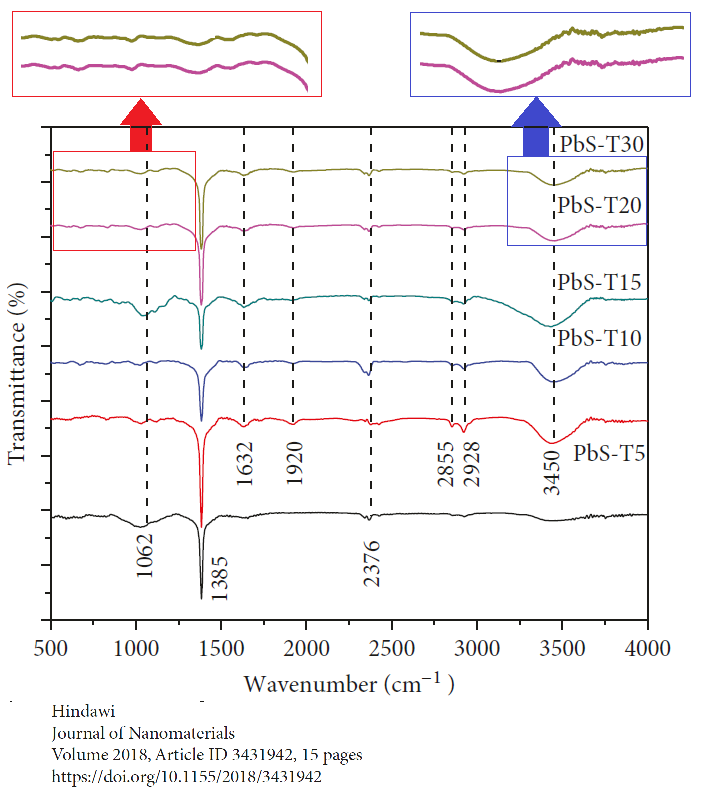
Update: this paper was retracted in February 2021
The hot-blooded Mexican Portillo Moreno addressed his critic as a “Pinche estúpido” which means either “fucking moron” or “stupid prick” (or maybe both), and instructed them to stop criticising his science and to learn instead. As I was told, the professor communicates in same colourful language with his students. Maybe he does achieve in this way silence and subordination in the lecture room, but not on PubPeer. Another critic commented that also “in Fig. 14(a), absorption spectra for samples PbS-T5 and PbS-T10 are identical, albeit samples allegedly have different compositions“. Such things do not happen by chance, maybe by accident (if one-off), and they certainly can happen by intentional data manipulation.
That same Hindawi paper also contained an image reused in a different paper, submitted in the same week to an Elsevier journal:
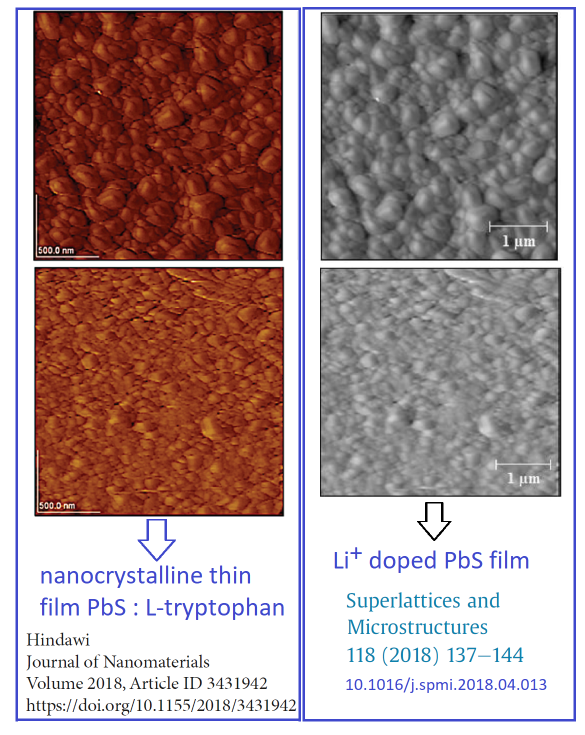
M. Chávez Portillo, J. Alvarado Pulido, S. Gallardo Hernández, B.S. Soto Cruz S. Alcántara Iniesta, R. Gutiérrez Pérez, O. Portillo Moreno Voc enhancement of a solar cell with doped Li + -PbS as the active layer Superlattices and Microstructures (2018) doi: 10.1016/j.spmi.2018.04.013
Actually, the image is even older: it appeared already 3 years before, Gutierrez Perez et al, Revista Mexicana de Fısica 2015, where it showed a bismuth doped thin film. Somehow that same thin film later came to instead contain the amino acid L-tryptophan in Hindawi and lithium in Elsevier. How can this happen?
In a different case, Portillo-Moreno provided his expert explanation as chemistry professor. It was might more polite than the previous one, for his standards.
R. Palomino-Merino, O. Portillo-Moreno, L. A. Chaltel-Lima, R. Gutiérrez Pérez , M. De Icaza-Herrera, V. M. Castaño Chemical Bath Deposition of PbS:Hg2+Nanocrystalline Thin Films Journal of Nanomaterials (2013) doi: 10.1155/2013/507647
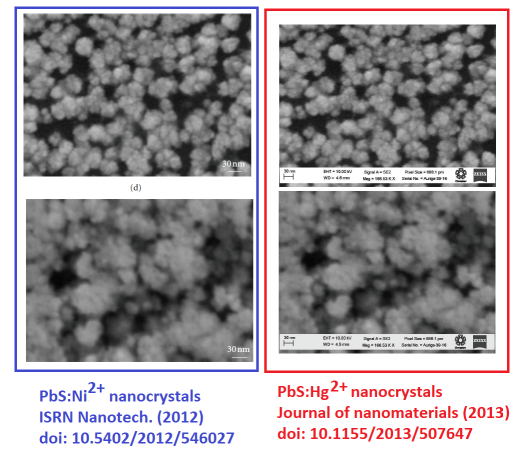
Update: this paper has been retracted in January 2021
The image in this Hindawi publication derives from yet another Hindawi paper by similar authors Portilo Moreno et al ISRN Nanotech 2012. Obviously the materials (allegedly!) used for nanocrystals are different: nickel is not really the same as mercury, you don’t need to be a chemistry professor to know that. Portillo-Moreno sees it differently though:
” It is correctA simple explanation, it should be considered that they are not exactly two different materials. Both materials are thin films of PbS synthesized by the same (CBD) technique doped with different ions (Ni2+ and Hg2+) . Only the morphology is similar in these materials that are systematically dopedHowever, the optical and electrical properties are different. Thanks for the comment“
Another commenter chimed in wondering why Figure 3 from the 2012 Hindawi paper reappeared later in that old treasure trove Gutierrez Perez et al, Revista Mexicana de Fısica 2015, proposing that mercury is actually same as bismuth:
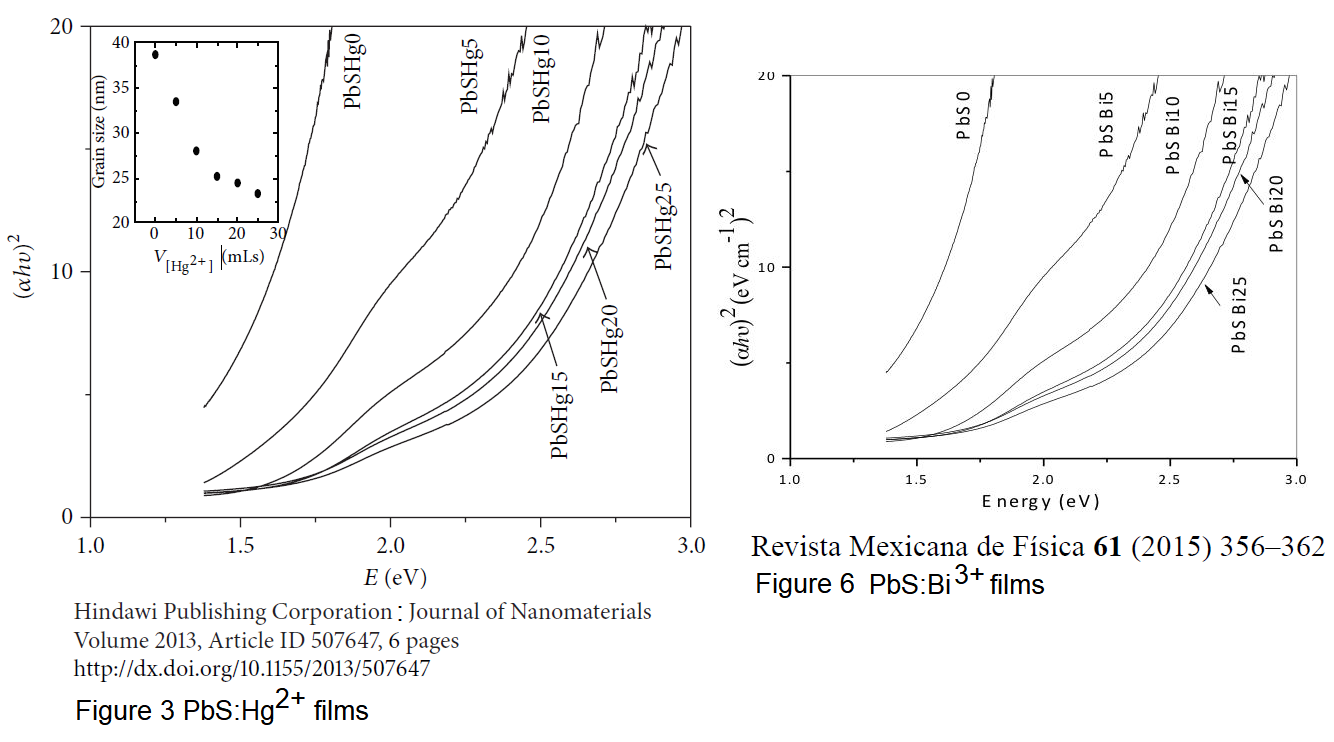
” If “the optical and electrical properties are different” as you argued, how do you explain that the (αhν)2(\alpha h \nu)^2(αhν)2 vs. hνh \nuhν plots for these PbS:Hg(2+) thin films are identical to those you reported for PbS:Bi(3+) two years after in the Rev. Mex. Fis.“
In another case, Portillo-Moreno and his confused colleagues decided that mercury is actually the same thing as copper (let’s hope they didn’t adjust their mineral supplements accordingly):
R. Palomino-Merino, O. Portillo-Moreno, J. C. Flores-Garcia, J. Hernandez-Tecorralco, J. Martinez-Juarez, A. Moran-Torres, E. Rubio-Rosas, G. Hernandez-Tellez, R. Gutierrez-Perez, L. A. Chaltel-Lima PbS Nanostructured Thin Films by In Situ Cu-Doping Journal of Nanoscience and Nanotechnology doi: 10.1166/jnn.2014.8664
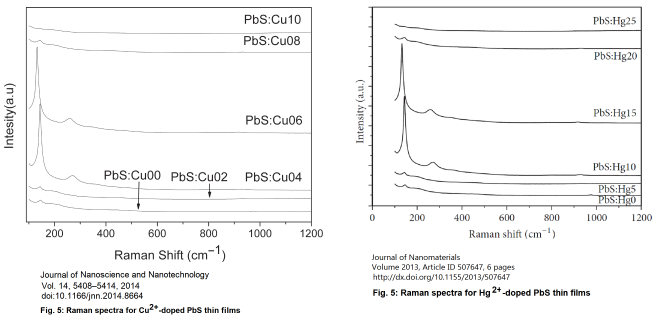
If the doped chemistry professor Portillo Moreno cannot distinguish between elements of the periodic system, why would he bother about functional groups? To him, an uncharged methyl group looks exactly like a floride ion.

B. Anzaldo Olivares, O. Portillo Moreno, G. Hernández Téllez, E. Rubio Rosas, F.J. Meléndez Bustamante, M.E. Castro Sánchez, P. Sharma, A. Mendoza, R. Gutiérrez Pére Green emission band induced by crystal defects in halogenated (-Br, -Cl, -F) chiral imines with a benzo[b]thiophene-based moiety Optical Materials (2019) doi: 10.1016/j.optmat.2019.06.007 (Received 15 January 2019, Revised 8 April 2019, Accepted 6 June 2019, Available online 14 June 2019.)
O. Portillo-Moreno, R. Palomino-Merino, G.Hernández-Téllez, G.E. Moreno-Morales, M.Mora-Ramírez, E.Rubio-Rosas, A.Mendoza, R.Gutiérrez-Pérez Morphological, structural and optical analysis of green, red and yellow emission bands in new chiral imines with a benzothiophene moiety Optical Materials (2019) doi: 10.1016/j.optmat.2019.04.063 Received 23 January 2019, Revised 24 April 2019, Accepted 26 April 2019, Available online 28 May 2019.
These two papers, submitted simultaneously to same Elsevier journal, contain most obviously a reused image of some crystals, only the molecules are different: One has a fluoride where the other has a methyl group. Nobody at the journal noticed or if they did, nobody minded. This is hardly surprising at Elsevier. Actually the data from the second paper was published at the same journal the year before, in Portillo Moreno et al Optical Materials 2018. The distinction now being between amine and imine, you really cannot blame someone that “pinche estúpido” to not know the difference. Although for all we know, all three papers might have had same handling editor and maybe also same peer reviewers. Nobody minded that two different molecules had exactly same synthesis and analysis data.
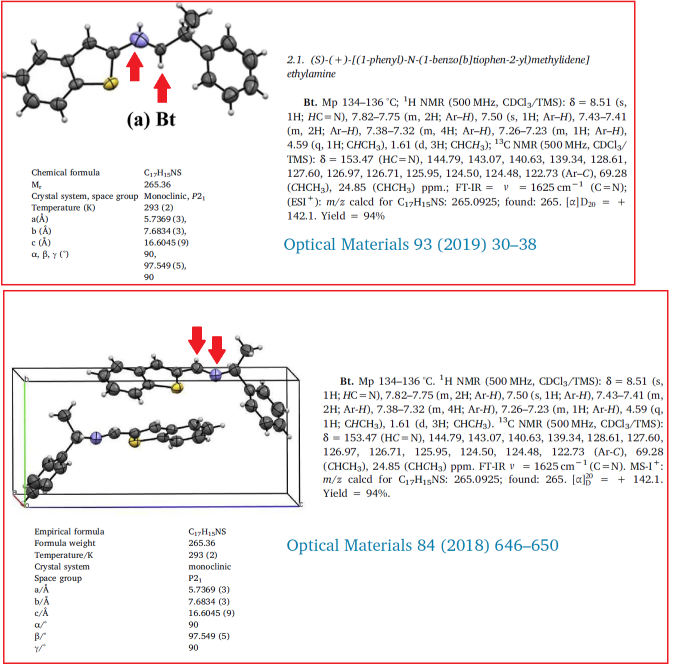
Moving on to the next willing victim. Optik, as the name says, is a traditional German journal, published by Elsevier, and this journal has been had very badly. Optik published 13 papers by Portillo Moreno so far, and just because not all of them are on PubPeer doesn’t mean the others are trustworthy. They were simply never scrutinised. But here are some examples:
Inside one figure of an Optik paper, Portillo-Moreno copy-pasted an image and nobody noticed, because the cloned version referred to different materials. He also reused and relabelled data from an earlier paper, Chavez Portillo et al Revista Mexicana de Fisica 2015.
O. Portillo Moreno, R. Gutiérrez Pérez, M. Chávez Portillo, M.E. Araiza García, G.E. Moreno, S. Cruz Cruz, E. Rubio Rosas, M. Hernandez Lascano Morphological, optical and structural analysis in CdS, CdS-CdCO3 and CdCO3 thin solid films grown by chemical bath Optik (2018) doi: 10.1016/j.ijleo.2017.11.036
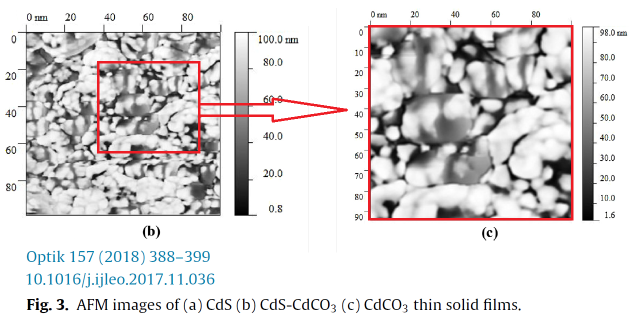
That Optik paper also contains a figure re-purported from Gutierrez Perez et al Materials Letters 2015. Allegedly, back in 2015 it used to contain lead, which the authors presumed as decayed by 2018. In reality probably, sod knows what that image originally showed and where the Portillo Moreno team got it from:
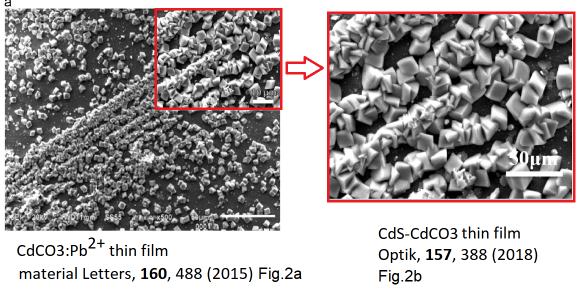
Elsewhere, cadmium-selenium thin films became doped by a non-existent erbium, via cunning image copy-paste inside the same figure of another Optik paper.
O. Portillo Moreno, R. Gutiérrez Pérez , R. Palomino Merino, M. Chávez Portillo, M.N. Márquez Specia, M.E. Hernández Torres, M. Gracia Jiménez, J.R. Cerna, M. Zamora Tototzintle Near-infrared-to-visible upconverting luminescence of Er3+-doped CdSe nanocrystals grown by chemical bath Optik (2017) doi: 10.1016/j.ijleo.2017.03.074
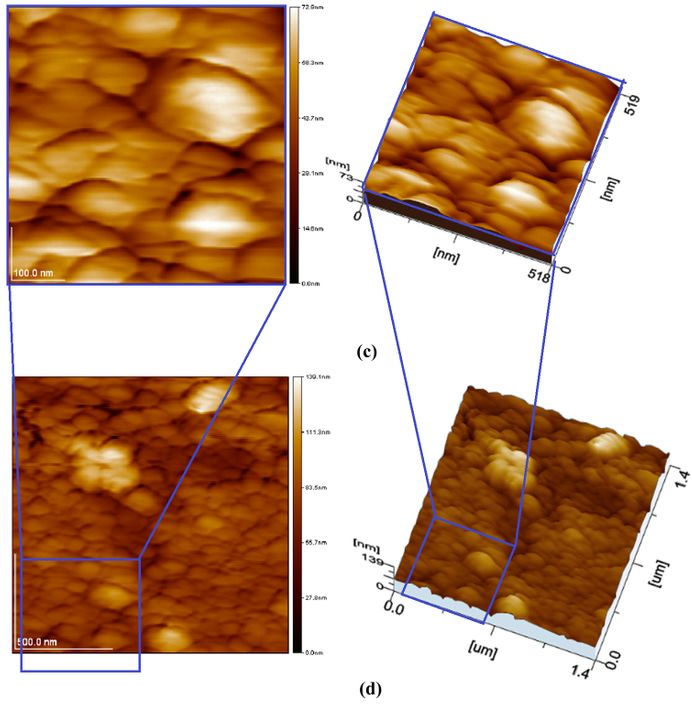
Two more papers were submitted together to Optik, with same images showing different samples. The first paper was submitted on 13 June 2016:
O. Portillo Moreno, R. Gutiérrez Pérez, M. Chávez Portillo, G. Hernández Téllez, E. Rubio Rosas, S. Cruz Cruz, A.Moreno Rodríguez Synthesis, morphological, optical and structural properties of PbSSe2− nanocrystals Optik (2016) doi: 10.1016/j.ijleo.2016.06.022

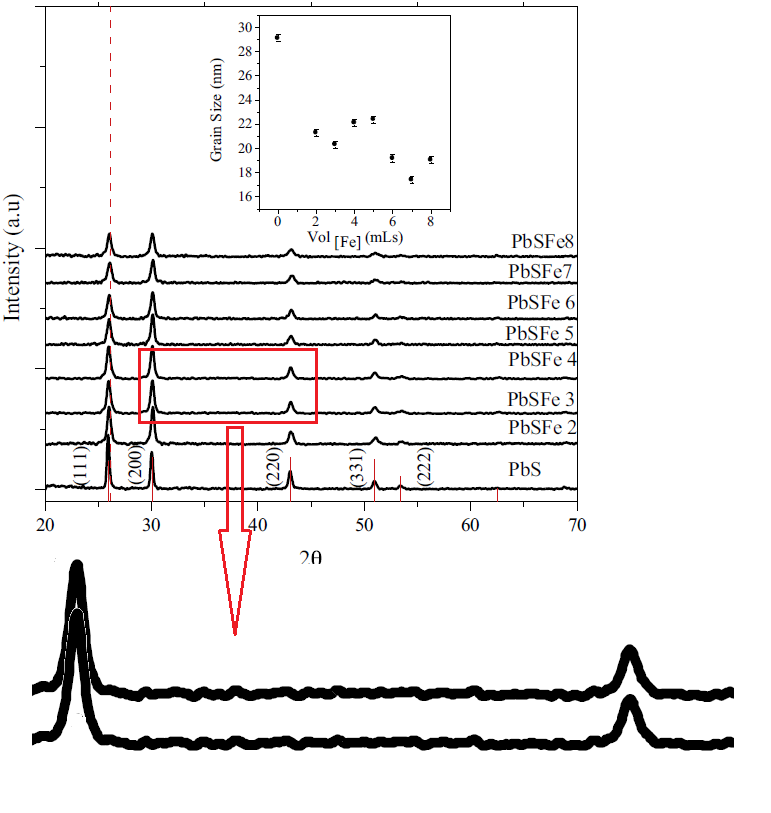
O. Portillo Moreno, R. Gutiérrez Pérez, M. Chavez Portillo, L. Chaltel Lima, G. Hernández Téllez, E. Rubio Rosas Morphological, structural, optical and electrical properties of PbS nanocrystals doped with Fe2+ grown by chemical bath Optik (2016) doi: 10.1016/j.ijleo.2016.08.036
The other paper was accepted for publication a week before, on 4 June 2016. One can rest assured the editors rejoiced and congratulated each other to have recruited such productive and dedicated authors from Mexico. Was the handling editor the same? Very likely. Did someone notice the second paper had a falsified spectra? Depends if anyone actually looked.
Nine days after the second Optik paper was submitted, on 22.06.2016, the authors sent a paper to another Elsevier journal, containing the same image, just a bit brightened. And iron became indium.
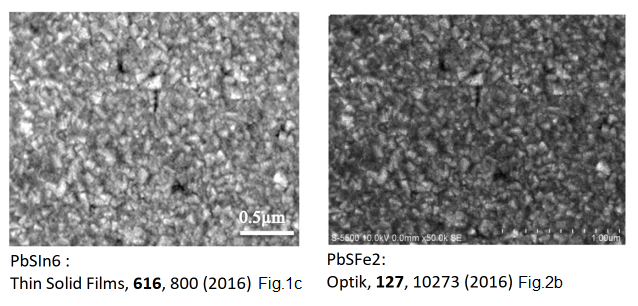
O. Portillo Moreno, R. Gutiérrez Pérez, R. Palomino Merino, M. Chávez Portillo, G. Hernández Téllez, E. Rubio Rosas Optical and structural properties of PbSIn3+ nanocrystals grown by chemical bath Thin Solid Films (2016) doi: 10.1016/j.tsf.2016.10.018
To top it off, the authors faked some FTIR spectra by copy-pasting bits of them to nano-fabricate new ones in Photoshop or MS Paint.
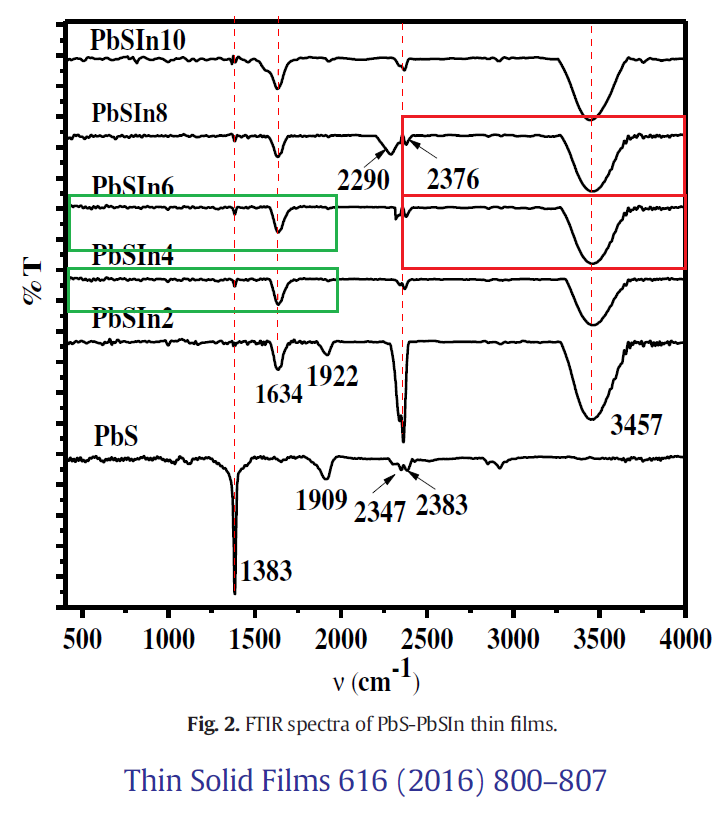
And on 20.07.2016, while the second Optik 2016 paper was still in peer review, Portillo Moreno sent off another manuscript containing same image data of doped thin film, to a different duped Elsevier journal:
M. Chávez Portillo, O. Portillo Moreno, R. Gutiérrez Pérez, R. Palomino Merino, H. Santiesteban Juarez, S. Tehuacanero Cuapa, E. Rubio Rosas Characterization and growth of doped-PbS in situ with Bi 3+ , Cd 2+ and Er 3+ ions by chemical bath Materials Science in Semiconductor Processing (2017) doi: 10.1016/j.mssp.2017.09.012
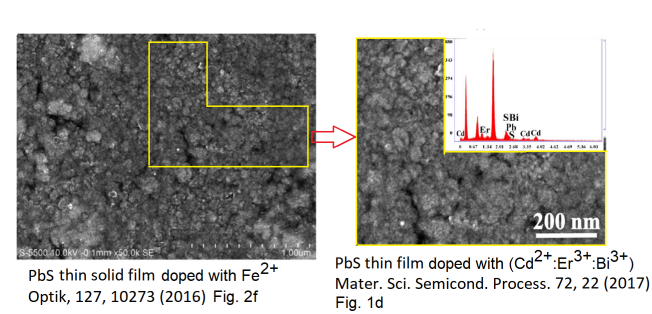
This is true alchemy, turning iron to cadmium, erbium and bismuth simultaneously! Or maybe it is another “Imbécil Estudia” by Portillo Moreno.
The practice of data cloning began around 5-6 years ago, and Portillo Moreno has a solid reason for that. He and his colleagues (like René Gutiérrez-Pérez) are namely funded by around 60% by the national agency CONACyT via the so-called SNI programme. Every 3-5 years, active CONACyT investigators are evaluated, and for the last 20 years the criterium was the arithmetical number of publications. This is why Portillo-Moreno and Gutierrez-Perez formed a clique together with other BUAP colleagues, where fabricated papers are published on a conveyor belt and everyone gets a ride. Lo and behold, some of the most productive chemistry researchers in Mexico!
No wonder the editors of Optik are so honoured to publish the constant stream of garbage Portillo Moreno dumps on them. The scheme works only when the perpetrators don’t draw too much attention to themselves. The 8 months old PubPeer evidence is definitely not helpful, but this is why no academic profiles of Portillo Moreno and his colleagues can be found on internet, not even by combing their university’s website. There are no photos of the chemistry professor anywhere. As if he don’t work at BUAP, or anywhere in academia. Even the email address he uses as corresponding author is a yahoo.com one. He is just a figment of your imagination. Just leave Portillo Moreno alone, stop scrutinising his papers.
However, if you would like to meet the doped nanotech fabricator or his BUAP colleagues, they occasionally pop over for holidays to a predatory scamference in Europe, like those of WASET, because the university pays.
Update 10.07.2021
Pinche Estupido was found guilty of research misconduct in February 2020 and went into retirement in January 2021, as reader comments below. His pension is 25,000 pesos/month (1200 USD/month), as reader found out. Here the BUAP decision on the misconduct (Google-translate):
“Finally, a case of academic dishonesty was presented by Dr. Oscar Portillo of the Faculty of Chemical Sciences and of around thirty collaborators between researchers and students of the Institution, where practices of reuse, falsification and manipulation of images were detected in twenty-three publications that were sent to different scientific journals, in order to have a greater number of publications. Dr. Portillo presents a statement before the Office of the Advocate General and admits oversights and serious errors in at least eleven of his publications, assuming their responsibility for those facts and presents a defence letter before a Notary Public, defining all the others authors free of all responsibility, a group of eight co-author researchers, sent a letter disclaiming any responsibility that involves them with the publications of Dr. Portillo, other authors asked the publisher to withdraw one of the published articles.
Within the opinion that the Commission sent to the Office of the Vice President after analyzing the documentation presented, confirm the aforementioned facts and recommend that instructions are be issued to the authorities institutional institutions, provided that these facts are considered as contrary to the ethical principles defined in the Organic Statute of our University, they also consider that these acts seriously affect the prestige of the Institution. Additionally, they recommend turning instructions to the corresponding instances to prevent these publications are endorsed in the programs of ESDEPED, Recognition of High Profiles, Register of Researchers and S.N.I., as well as the suspension of a series of benefits to Dr. Portillo and some of his collaborators.
Only the two Hindawi papers by Portillo Moreno were retracted (see updates above). Elsevier can’t care less.

Donate!
If you are interested to support my work, you can leave here a small tip of $5. Or several of small tips, just increase the amount as you like (2x=€10; 5x=€25). Your generous patronage of my journalism, however small it appears to you, will greatly help me with my legal costs.
€5.00


So, are you sure this guy actually exists? It’s pretty easy to make a Research Gate profile as the site just does it for you. Then you check it once a while and add a few follows per month. Or maybe he existed at one point but died and is now a fallback yahoo address? It would be a good way for the coauthors to increase their publication numbers and create a convenient fall guy.
Still sounds pretty risky as someone at the institute in HR could actually confirm if he is real, but the bet would be that the university doesn’t want any trouble.
LikeLike
oh, but Oscar does exist. He is in this list for example:
http://www.viep.buap.mx/investigacion/sni-padron2019.php
I understand he had his institutional profile removed after PubPeer stuff emerged. Hide and seek!
LikeLike
I am sure that this guy is a real person. He was my teacher at bachelor, and all of this research ir real.
LikeLike
There is a page at CONACYT site dedicated entirely ti him https://conacyt.elsevierpure.com/es/persons/oscar-portillo-moreno
LikeLike
why these nanoscience guys do not take 20-30 random scanning electron microscopy photoshoots of some random crystals, so their entire career lifespan would be covered with sufficient images?…..they keep reusing and photoshopping one single image instead…..
LikeLiked by 1 person
They are good at working with small amounts of material.
Seriously though, I feel like I can trust the local nanoscience group because they had problems with getting published in the good journals and didn’t have as many publications per year as the ‘leaders’ or people who easily get tenure. It’s no guarantee, but it’s a sign of honesty probably. Another is that they spend an awful lot of time in the TEM room, and also at the bar bitching about life, including subsequent hangovers, which leaves them little time to learn Photoshop skilz.
LikeLike
The “Pinche estúpido” comment on the PubPeer thread has been moderated by the PP administrator and is no longer visible. However, the trace of the gentle argument will remain on forbetterscience.com.
LikeLike
Thanks! I added a screenshot now, for the posterity. It seems PubPeer, who blocked me on Twitter, do read my site after all (with gnashing teeth). Until now they knew, but didn’t feel like removing that comment.
LikeLike
I cannot figure out what is worse in science academia: an English woman who commits fashion gaffes as egregious as the cherry-picking of IC 50 data she is accused of, or a cussing Mexican too lazy to commit fraud properly. Maybe they need to be introduced to one another.
LikeLike
Pingback: Fake spectra googling #CleanYourScience – For Better Science
They have a new article, where they changed some figures and apologized for inconvenience
https://www.sciencedirect.com/science/article/pii/S0749603619320439?via%3Dihub
LikeLike
Pingback: Linköping haunted by fake spectra – For Better Science
It seems that Dr. Portillo-Moreno is no longer employed in the University of Puebla.
LikeLike
How do you know?
LikeLike
He retired in January 2021. See the list of pensioners and retired persons in the University of Puebla (page 84):
Click to access jub1erTrim2021.pdf
The PNT (Plataforma Nacional de Transparencia) shows that he will now receive a pension of 25,000 pesos/month (1200 USD/month). See:
https://consultapublicamx.inai.org.mx/vut-web/faces/view/consultaPublica.xhtml#inicio
(Go to Puebla > Benemérita Universidad Autónoma del Estado de Puebla > Jubilados y pensionados > jubilados y pensionados_Listado de jubilados y pensionados y el monto que reciben. Use “Filtro de búsqueda”),
Actually, I guess that he was not penalized for misconduct, since he was tenured, but was rather forced to retirement, However, a document released by the research council of the University in 2020 states that “Dr. Oscar Portillo and approximately 30 collaborators, including researchers and students, were involved in reuse, falsification, and improper handling of images in 23 publications, with the aim of having more publications”. The document also mentions that Dr. Portillo “bears full responsibility” for misconduct and that he acknowledges “carelessness and serious errors in at least 11 publications”. See the memo (page 2):
Click to access ciep-acta-2020-02-27.pdf
LikeLike
Thank you, I updated the article.
Only papers retracted are the two by Hindawi, I added the retractions.
https://www.hindawi.com/journals/jnm/2021/6821974/
https://www.hindawi.com/journals/jnm/2021/6040219/
“As originally raised on PubPeer [2], the article was found to have concerns with some of the figures. […] The journal and the editorial board are retracting the article due to concerns that the data in this article are not reliable. The authors do not agree to retraction.”
The amount of f***s given by Elsevier: exactly zero.
LikeLike
There is a third retraction with Hindawi:
https://www.hindawi.com/journals/isrn/2021/2931539/
This group also published errata for 3 Elsevier articles.
LikeLike
Sorry to correct your and Hindawi’s ill-informed claims, but this retraction is not recorded by RetractionWatch database and hence does not exist.
http://retractiondatabase.org/RetractionSearch.aspx#?auth%3dPortillo-Moreno%252c%2bO
LikeLike
Oh, I see the issue now: the RW database wrongly included the first author as “Portilli” in place of “Portillo”, I will ask for correction.
http://retractiondatabase.org/RetractionSearch.aspx#?auth%3dPortilli%2bMoreno%252c%2bO
LikeLike
Since you are writing, ask Ivan the Omniscient to include all Xuetao Cao retractions, not just some.
https://forbetterscience.com/2021/06/02/the-16-secret-retractions-of-xuetao-cao-at-jbc/
LikeLike
Este mercenario de la ciencia, murió el 07 mayo 2023, checar post de la pagina oficial (facebook) de la universidad donde laboraba. Facultad de Ciencias Quimicas BUAP-Oficial
Algunos enlaces donde se publico la investigación por mala conducta de esta persona ya no sirven o no se encuentra la pagina. que mal porque estos antecedentes deben permanecer para quienes siguen siendo mercenarios de la ciencia en pos del presupuesto gratis.
LikeLike
Indeed!
LikeLike